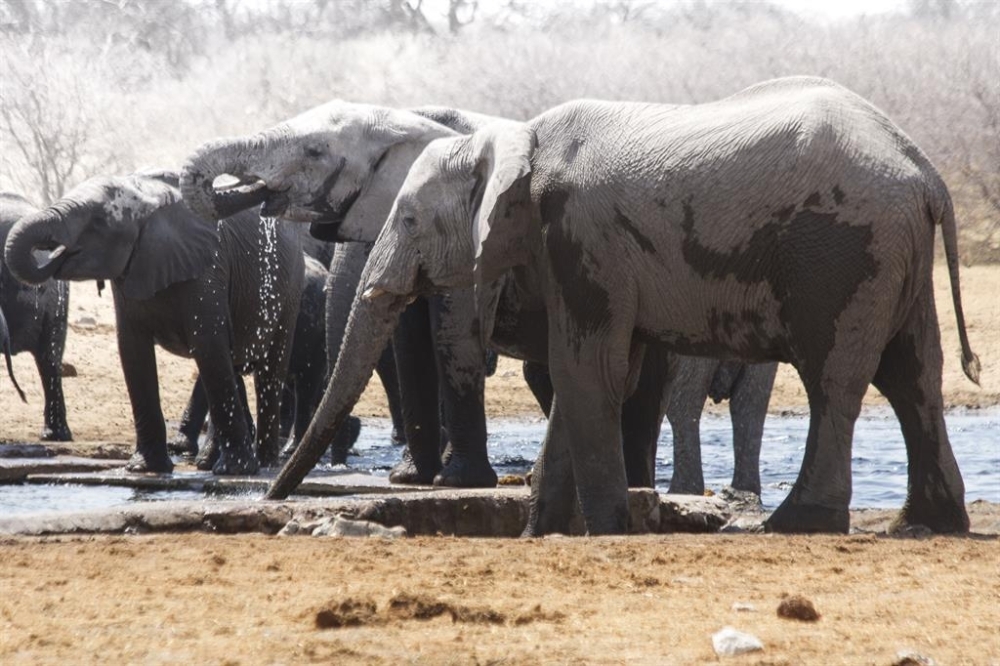Illegal wildlife trade continues to threaten African elephants – study
Thousands of species poached annually
The study found that forest elephant populations suffered higher rates of illegal killing than their savannah peers.
Poor national governance and low law enforcement are said to be amongst the primary drivers of the lucrative global ivory trade, which continues to threaten the existence of African elephants, a study by the University of Cape Town (UCT) and Oxford University found.
The study, which also listed low household wealth and health and global elephant ivory prices as other contributing factors, sought to uncover what might drive, facilitate or motivate continent-wide poaching.
The illegal wildlife trade is one of the highest value illicit trade sectors globally, with thousands of wildlife species - worth billions of dollars - being poached, trafficked and sold annually.
This is a major threat to biodiversity and ecosystems, which are the bedrock of human well-being, as the recent multi-national United Nations Biodiversity Conference made clear.
Published in the Proceedings of the Royal Society recently, the study found that forest elephant populations suffered higher rates of illegal killing than savannah elephants.
The paper - in which Dr Tim Kuiper and Professor Res Altwegg of the Centre for Statistics in Ecology, Environment and Conservation at the UCT department of statistical sciences participated - found weak evidence that armed conflicts may increase the illegal killing of elephants, and no evidence for effects of site accessibility, vegetation density, elephant population density, precipitation or site area.
Cause and effect
Addressing wider systemic challenges of human development, corruption and consumer demand would help reduce poaching, corroborating broader work and highlighting the ultimate drivers of the global illegal wildlife trade.
Kuiper said: “We developed a model using 19 years of data on 10 286 poached elephants between 2002 and 2020, detected at 64 sites in 30 African countries”.
He added that poaching of high-value species like elephants and rhinos is driven primarily by sophisticated criminal syndicates.
“The strong associations we found between poaching and factors like corruption and human development do not necessarily imply that these factors directly cause poaching. Correlation does not imply causation. Deeper research into these associations at particular sites will help to see what underlying processes are at play, and better understand cause and effect.”
Economic-deprivation link
Professor Eleanor Milner-Gulland from the University of Oxford remarked: “Although we cannot claim causality, we make some suggestions about what might lie behind the associations which we found, based on understanding from previous research studies. For example, a key finding was that having controlled for other factors, higher levels of local human well-being in the areas around a park was associated with lower poaching.
“One explanation could be that, in areas of economic deprivation, local residents may participate in illegal killing to meet their basic needs or earn extra income, in the absence of viable alternatives.”
The study, which also listed low household wealth and health and global elephant ivory prices as other contributing factors, sought to uncover what might drive, facilitate or motivate continent-wide poaching.
The illegal wildlife trade is one of the highest value illicit trade sectors globally, with thousands of wildlife species - worth billions of dollars - being poached, trafficked and sold annually.
This is a major threat to biodiversity and ecosystems, which are the bedrock of human well-being, as the recent multi-national United Nations Biodiversity Conference made clear.
Published in the Proceedings of the Royal Society recently, the study found that forest elephant populations suffered higher rates of illegal killing than savannah elephants.
The paper - in which Dr Tim Kuiper and Professor Res Altwegg of the Centre for Statistics in Ecology, Environment and Conservation at the UCT department of statistical sciences participated - found weak evidence that armed conflicts may increase the illegal killing of elephants, and no evidence for effects of site accessibility, vegetation density, elephant population density, precipitation or site area.
Cause and effect
Addressing wider systemic challenges of human development, corruption and consumer demand would help reduce poaching, corroborating broader work and highlighting the ultimate drivers of the global illegal wildlife trade.
Kuiper said: “We developed a model using 19 years of data on 10 286 poached elephants between 2002 and 2020, detected at 64 sites in 30 African countries”.
He added that poaching of high-value species like elephants and rhinos is driven primarily by sophisticated criminal syndicates.
“The strong associations we found between poaching and factors like corruption and human development do not necessarily imply that these factors directly cause poaching. Correlation does not imply causation. Deeper research into these associations at particular sites will help to see what underlying processes are at play, and better understand cause and effect.”
Economic-deprivation link
Professor Eleanor Milner-Gulland from the University of Oxford remarked: “Although we cannot claim causality, we make some suggestions about what might lie behind the associations which we found, based on understanding from previous research studies. For example, a key finding was that having controlled for other factors, higher levels of local human well-being in the areas around a park was associated with lower poaching.
“One explanation could be that, in areas of economic deprivation, local residents may participate in illegal killing to meet their basic needs or earn extra income, in the absence of viable alternatives.”




Comments
Namibian Sun
No comments have been left on this article